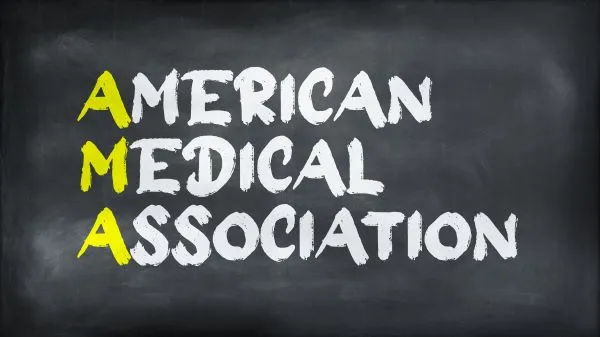Revision puts emphasis on substantive E/M portion.
It’s 2024, the year everything lined up so CPT® and Medicare could have parallel policies on determining what constitutes a split/shared visit.
Why? The 2024 Medicare Physician Fee Schedule (MPFS) finally puts this issue to rest in the final rule.
See how it’s going to affect your coding this year.
Substantive Portion now Quantifiable
The AMA has officially updated the CPT® guidelines for split or shared visits to be implemented in 2024. The revision clarifies that a split or shared visit is defined by the substantive portion of the evaluation and management (E/M) service provided.
The substantive portion is now quantifiable and can be determined in two ways: it is either based on the majority (over half) of the total clinical care time invested in the visit by both the physician and the accompanying qualified healthcare professional (QHP); or by a substantive portion of the medical decision making (MDM) process. These guidelines are set to streamline the billing process, ensuring clarity on which healthcare provider — the physician or the QHP — is authorized to bill for the service rendered during a split or shared visit.

For the physician to be reported as the billing provider for a shared E/M service, the 2024 CPT® guidelines require the physician to make or approve the management plan for the patient and assume responsibility for that plan with its inherent risk of complications, morbidity, or mortality. This qualifies the physician as having fulfilled two of the three key elements for choosing the appropriate E/M code based on MDM.
CPT® states that for shared service MDM scoring, the physician does not need to interview the independent historian personally, nor must they order and/or review tests or external documents, as these actions contribute to the creation of the management plan. CPT® does, however, mandate that the physician must personally perform any independent interpretations and external discussions when these are used in determining the reported E/M level.
Recognizing that facility-based services have evolved to a more team-based approach to care, the Centers for Medicare & Medicaid Services (CMS) has acknowledged the close coordination and
collaboration between physicians and nonphysician practitioners (NPPs), such as physician assistants (PAs) and nurse practitioners (NPs), within the same group. Reflecting this evolution, CMS updated the Medicare Claims Processing Manual in 2022 (chapter 12, section 30.6.18). This change underscores CMS’ recognition of integrated clinical practices and supports the efficacy of shared patient care responsibilities.
According to the MPFS final rule: “A split (or shared) visit is an evaluation and management (E/M) visit in the facility setting that is performed in part by both a physician and a nonphysician practitioner (NPP) who are in the same group, in accordance with applicable law and regulations such that the service could be billed by either the physician or NPP if furnished independently by only one of them. Payment is made to the practitioner who performs the substantive portion of the visit.”
Split/Shared Confusion Cleared Up With Ruling
Physicians and coders have lived under a cloud of uncertainty for the last few years, as CMS has contemplated how to define a shared service. CMS has provided much-needed clarity in the CY 2024 final rule. CMS has announced the adoption of the CPT® definition of the “substantive portion.” This alignment with CPT® standards is set to take effect in 2024.
“In consideration of the changes made by the CPT® Editorial Panel, we are revising our definition of ‘substantive portion’ of a split (or shared) visit to reflect the revisions to the CPT® E/M guidelines. Specifically, for CY 2024, for purposes of Medicare billing for split (or shared) services, the definition of “substantive portion” means more than half of the total time spent by the physician and NPP performing the split (or shared) visit, or a substantive part of the medical decision making as defined by CPT®,” per the 2024 final rule.
Use This Guide on ‘Substantive Portion’
Understanding the revised shared service and substantive portion definition is only part of the process. While the CPT® and CMS have not established detailed documentation protocols, they do require that the physician/QHP who developed or approved the patient’s management plan and assumes responsibility for its implementation — along with its inherent risks — should be considered as having performed the substantive part of the MDM.

In 2020, CMS established a general principle to allow the physician/QHP who furnishes and bills for professional services to review and verify, rather than re-document, information included in the medical record by physicians, residents, nurses, students, or other medical team members. The scope of this principle was stated to encompass all Medicare-covered services reimbursed under the MPFS. In accordance with this existing principle, physicians are not mandated to personally record the MDM; they can instead review and approve the PA/NP documentation and attest to their performance of the substantive portion of the MDM. A statement such as “I personally made/approved the management plan for this patient and take responsibility for the patient management” will confirm their direct involvement in patient care decisions and performance of the substantive portion of the E/M service.
In cases where the E/M code relies on data category 2 (independent interpretation) and/ or data category 3 (discussion with an external physician), the physician’s record must include documentation of their independent interpretation and/ or reference to any discussions the physician had with external physicians or other sources. In these circumstances, the shared service attestation can include the independent interpretation or discussion of management. For example: “I personally made/approved the management plan for this patient and take responsibility for the patient management. I independently interpreted the EKG, which showed NSR with No ST changes.”
If the physician documents the MDM elements they personally performed during the encounter (e.g., plan of care, interpretations, medications prescribed, discharge instructions, etc.), they are not required to additionally document an attestation. The attestation examples provided are an alternative to the physician having to re-document the plan of care or MDM elements that the PA/NP has already documented. The attestation is not required to support reporting a shared service if the physician documents critical aspects of patient care to the extent that it is clear that they have made or approved the management plan for the patient and assume responsibility for the patient’s care.
Written by Todd Thomas, CPC, CCS-P.
